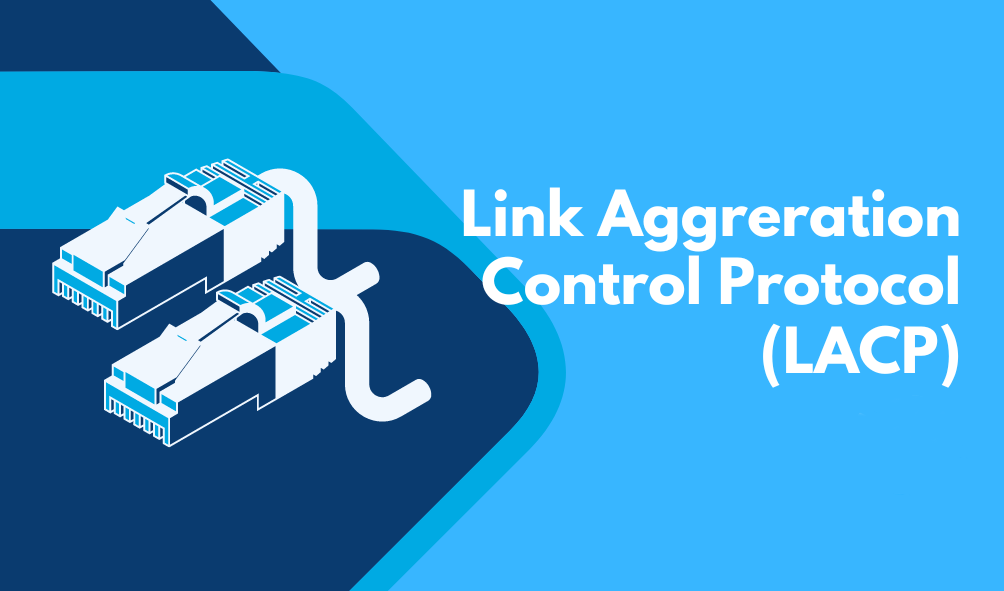Understanding the Link Aggregation Control Protocol (LACP)
As the demand for high-speed and reliable networks continues to grow, technologies like the Link Aggregation Control Protocol (LACP) have become indispensable. LACP plays a pivotal role in modern networking by enhancing bandwidth, reliability, and flexibility. This guide delves into the essentials of LACP, explaining how it works and why it’s a critical component of contemporary network infrastructures.
What is the Link Aggregation Control Protocol (LACP)?
The Link Aggregation Control Protocol (LACP) is defined by the IEEE 802.1AX standard and is used to aggregate multiple physical Ethernet links into a single logical link. These aggregated links, known as a “Link Aggregation Group” (LAG) or “port channel,” improve network efficiency by enabling redundancy and higher bandwidth utilization.

Core Functionality of LACP
LACP ensures reliable and efficient link aggregation through the following mechanisms:
- Dynamic Link Management: By exchanging Link Aggregation Control Protocol Data Units (LACPDUs), devices negotiate and maintain the LAG dynamically, ensuring optimal operation.
- Load Sharing: LACP distributes network traffic across all available links in the group, enhancing throughput and preventing congestion.
- Redundancy and Failover: In the event of a link failure, LACP redirects traffic to operational links, maintaining uninterrupted communication.
Why Use Link Aggregation Control Protocol?
LACP offers several advantages, making it a preferred choice for enterprises and service providers:
- Enhanced Bandwidth: LACP provides higher data transfer rates by combining multiple physical links, accommodating growing traffic demands.
- Improved Fault Tolerance: Redundancy ensures minimal disruption, as traffic seamlessly shifts to functional links during failures.
- Simplified Network Management: LACP consolidates multiple links into one logical interface, reducing administrative overhead.
- Optimized Resource Usage: Traffic balancing ensures efficient utilization of all aggregated links, avoiding bottlenecks.
Typical Applications of LACP
LACP is utilized in various networking scenarios, including:
- Data Centers: Establishing high-bandwidth, redundant links between servers and switches.
- Corporate Networks: Creating robust connections between critical devices and network segments.
- Service Provider Networks: Offering scalable and reliable connectivity for end-users and businesses.
How to Implement Link Aggregation Control Protocol
Deploying LACP involves straightforward steps:
- Enable LACP: Activate LACP on the devices and interfaces intended for aggregation.
- Assign Ports: Group the desired Ethernet ports into a single LAG.
- Validate Configuration: Use diagnostic commands to confirm proper setup and operational status.
- Test for Resilience: Simulate link failures to ensure failover mechanisms function correctly.

Best Practices for Deploying LACP
- Consistency in Link Settings: Ensure that all aggregated links operate at identical speed and duplex settings.
- Monitor Regularly: Periodic checks of LACP status help identify and resolve potential issues.
- Plan for Scalability: Design your network with room for expansion, allowing additional links to be added to LAGs as needed.
Conclusion
The Link Aggregation Control Protocol (LACP) is a cornerstone of modern networking, enabling higher performance and resilience. Whether in data centers, enterprise environments, or service provider networks, LACP enhances bandwidth, ensures fault tolerance, and simplifies network management. By integrating LACP into your infrastructure, you can future-proof your network and provide a robust foundation for evolving connectivity demands. Embrace LACP to unlock the full potential of your networking hardware and deliver seamless user experiences.